A vice is a bad habit that may affect a horse’s usefulness, dependability, or health. Stable vices are often a reflection of the animal’s personality, as the vice can result from nervousness, viciousness, fear, curiosity, excessive energy, nutritional deficiencies, or boredom. By nature, the horse is an athletic animal used to roaming and running at will over large areas, but it has become increasingly restricted with domestication.
Importance of Stable Vices
“The idle mind is the devil’s playground,” and the stall is the birthplace of most vices. Stable vices are much more common in stable and pastured horses. Horse vices that seem to result from boredom and inactivity often disappear with regular exercise. However, a vice is a habit, and once established, it is challenging to eliminate. Stable vices try men’s patience and tax his ingenuity while confirming the horse’s inventiveness. The stable vices can be classified as dangerous to the handler, dangerous to the horses, and nuisance habits. The horse vices that are dangerous to both the handler and horses need vigorous correction and prevention strategy.
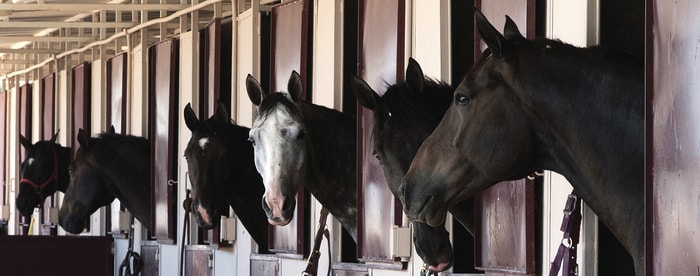
Horse Vices Dangerous to Men or Handler
The stable vices that are harmful to the handlers are:
1. Biting and Nipping
These are two dangerous vices because a horse can do severe damage to a handler with its powerful jaws. Stallions are particularly apt to bite and should always be observed. Young horses and bored mature horses sometimes get nippy, but neither vices should be tolerated.
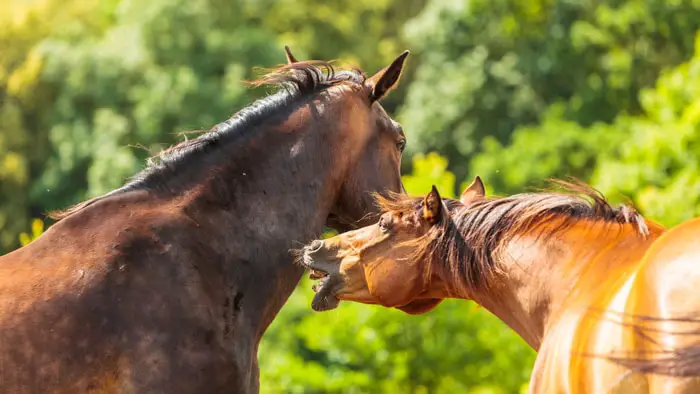
2. Stable Vices: Striking
Striking is the natural defense action of the horse to fear or confinement, but it is a hazardous habit for the handler. A striking horse can do serious bodily harm to someone in front of it, so it is best to handle the horse from the side and remain alert to its use of its front legs. A horse is most apt to strike when in nose-to-nose contact with another horse. A stallion will often strike when teasing or breeding a mare. A good horse [erson anticipated these situations and prevents striking so that it does not develop into a habit or vice.
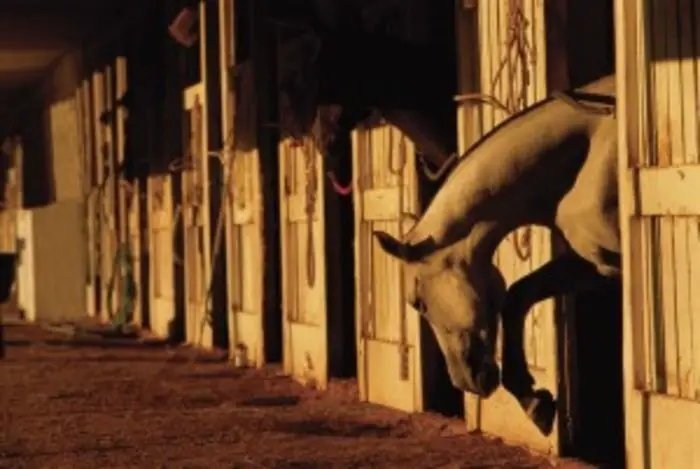
3. Rearing
Rearing is another defensive behavior of the horse and is dangerous to the handler because the flailing forelegs can come dangerously close to the head. Again, rearing should be anticipated and prevented by firm and drastic handling if necessary. An experienced handler can usually use a lead shank to prevent a horse from striking or rearing. There are situations in which a wisp should be used vigorously, as a striking or rearing horse is a potential killer.
4. Stable Vices: Kicking
Kicking deliberately at a handler is an act of meanness or fear on the part of the horse and must be corrected immediately. A cow kick is a forward and sideward kicking action that can catch a handler at the horse’s side. Kicking stall walls or trailer gates is a nuisance habit but creates the possibility of trauma and injury to the legs and expensive damage to the facilities. Many capped hocks and curbs had their origin in needless kicking.
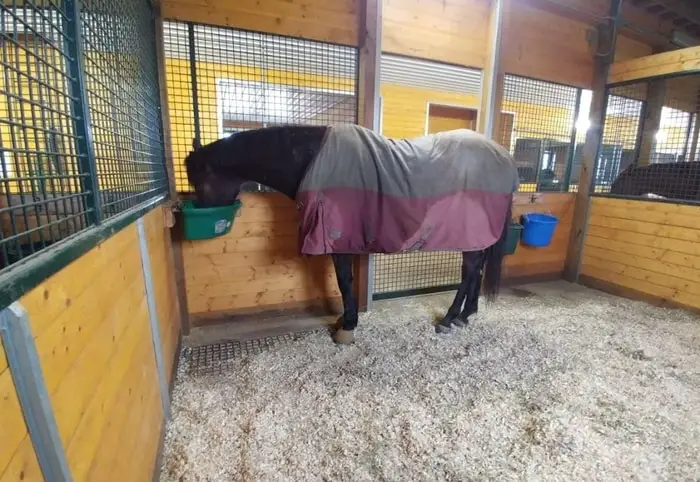
5. Charging
Charging is when a horse attacks or savage an unsuspecting attendant in a stall or paddock. This viciousness is most common among stallions, but it is occasionally observed in meares and geldings. The best correction is prevention by maintaining control of such a horse when in its stall or paddock.
6. Stable Vices: Crowding
Crowding is when a horse consciously crowds or squeezes the handler against the stall’s wall with its body. Correction requires alertness and anticipation. It is more common with horses housed in straight stalls.
Stable Vices Dangerous to Horses
The vices that are dangerous to the horse itself are:
7. Cribbing
Cribbing is a habit of fore-swallowing gulps of air. It is usually required that the cribber grasp at an object with its incisor teeth and then pulls its neck back in a rigid arch as it swallows air. The condition is considered a habit of boredom but is dangerous to horses because the swallowed air can create gastric upsets or colic. Cribbing is a vice that other horses frequently copy.
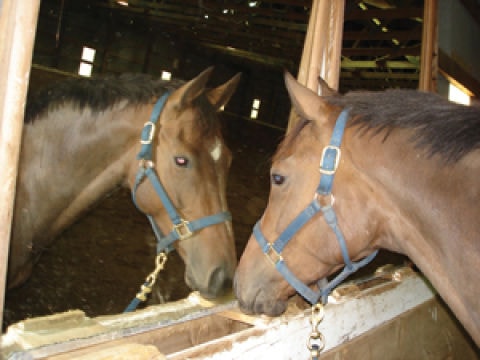
8. Stable Vices: Wood Chewing
Wood chewing is a habit that is costly and can be detrimental to the horse. Wood chewing is sometimes incorrectly referred to as cribbing, but it is a different vice that does not entail swallowing air. Wood chewers usually do not ingest the wood they chew, but some fragments can cause buccal infection, colic, or excessive tooth tear. Wood chewing is an acquired habit, and an entire herd may pick it up from one horse.
9. Eating Bedding, Manure, or Dirt
Eating manure, bedding, and dirt is an unpleasant habit. Dirt and sand eaters are susceptible to colic, and eating any nonnutritious foreign material can cause a digestive disorder.
10. Bolting Food
Bolting food is a habit of some horses of eating their grain without adequate chewing. If several large, round rocks are placed in the feeder, the bolting of the grains will be decreased. The condition can also result in digestive upsets and decrease the nutrient deficiency of the feed.
11. Stable Vices: Fighting
Fighting is a perennial problem because some horses are constantly aggressive towards other horses. An incessant fighter may have to be separated from a herd because it can cause considerable injury to the other horses by kicking, biting, and chasing. On the other hand, a group of horses running together will establish a particular hierarchy or pecking order. Young horses play at fighting but rarely exhibit actual aggressive behavior.
12. Horse Vices: Shying
Shying is a habit that may reflect poor vision or immaturity and lack of experience. Shying is usually a response to fear and can be dangerous to both horses and handlers. A shying horse is unpredictable and may shy away from one object only to face more serious trouble.
Stable Vices: Nuisance Habits of Horse
These habits are unacceptable and unwanted from a good horse.
13. Weaving
Weaving is a vice of a high-strung and nervous horse. The horse stands in place but waves its head and neck back and forth as it rocks from side to side. Weaving can be considered a nuisance, but it can have more severe consequences. Some weavers will stress the legs so that lameness occurs, whereas others will lose weight and become physically exhausted. Weaving is another vice that is quickly learned by stablemates.
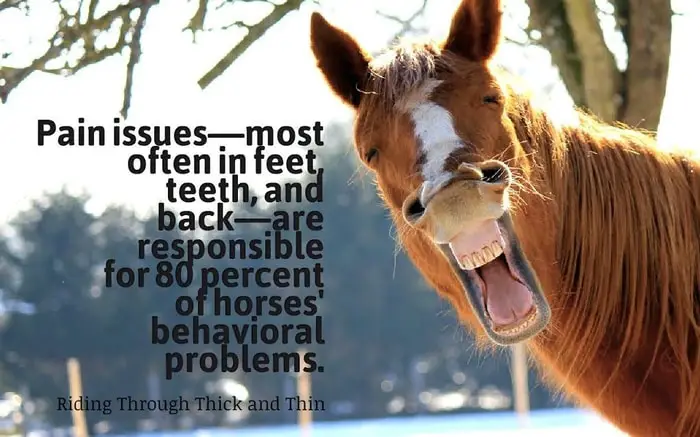
14. Stall Walking
Stall walking is another vice resulting from nervousness and excessive energy. The horse constantly paces or circles around the stall. This habit can have the same detrimental effect on the horse as weaving.
15. Stable Vices: Pawing
Pawing is a nuisance and creates additional work for the horseperson. The horse continuously paws at the floor and, if possible, digs a hole that requires repair. Pawing creates the possibility of a leg injury.
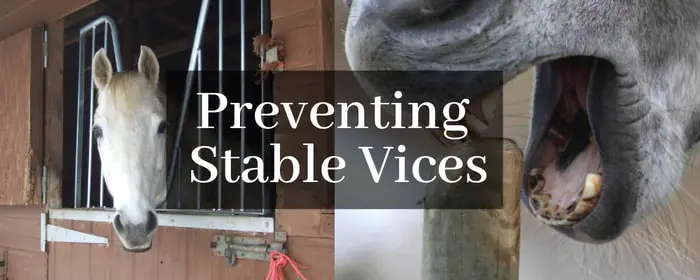
16. Mane and Tail Rubbing
Mane and tail rubbing is considered a vice, but it may be a sign of fungus, lice, or worm
infestation. However, some horses rub their tails without any external causes, which creates a nuisance problem for the owner.
17. Halter Pulling
Halter pulling is a vice that is usually a result of poor or inadequate training in tying when young. Some horses can never be cured of the habit of pulling back when tied, and a horse that will not tie is a nuisance that is sometimes dangerous.
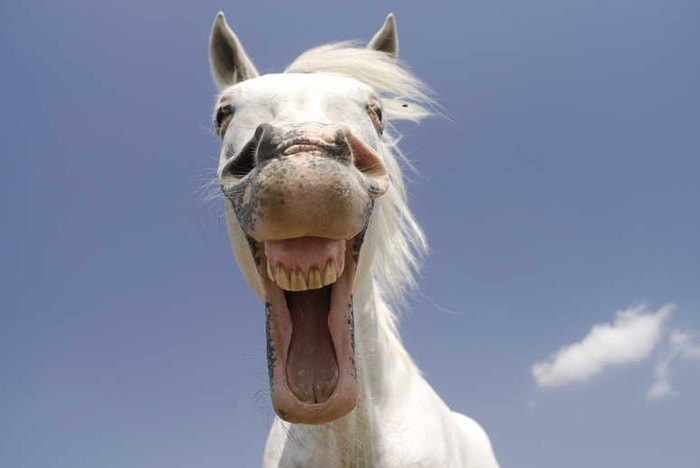
Final Advice on Stable Vices of Horse
Horse vices are detrimental to horses, handlers and cause a lack of performance of a horse. The horses having stable vices needs careful attention and should take immediate corrective measures. You must remove the causes of the development of vices. Most of the vices can be prevented by better management and balanced rations. It would be better if you kept your horse busy in work, exercise, pasture, and with other horses.